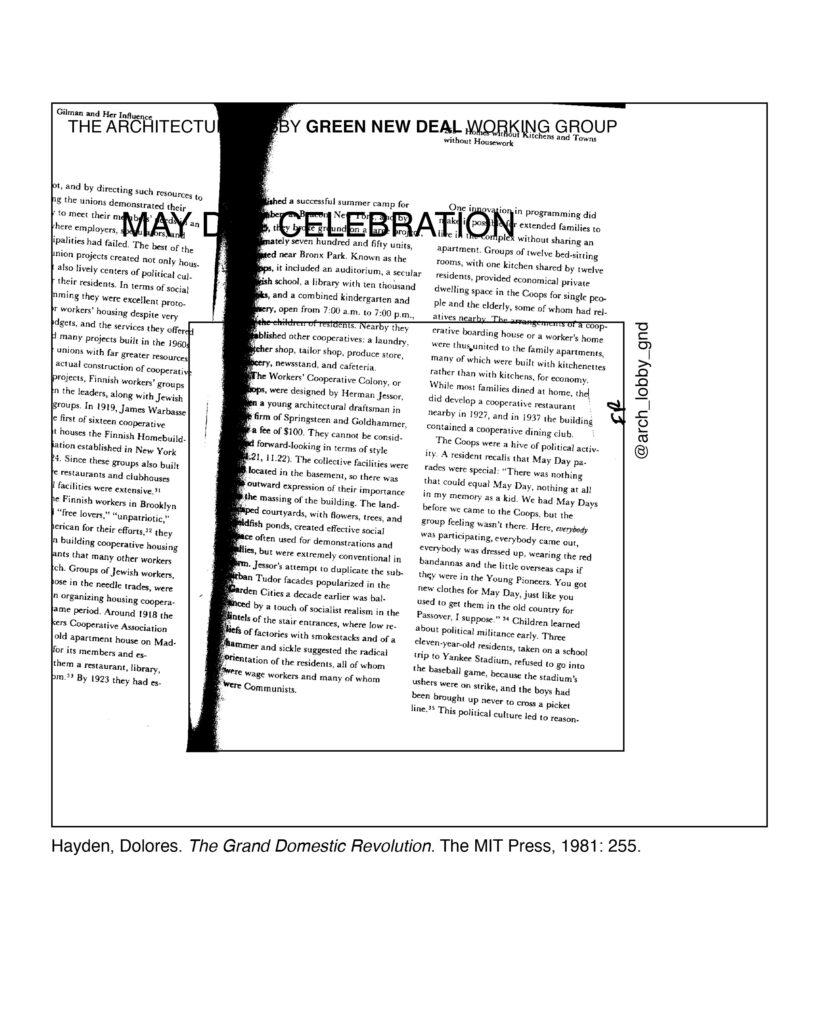The Architecture Lobby’s GND WG will be at DSK in Brooklyn on Monday night, May 1st at 7pm. Come and join us for drinks, conversation, and to celebrate recent labor gains. If you’ve been considering unionization or climate organization, bring your questions. We will be reading excerpts from our recent writing on just transitions and celebrating 4 years of connecting labor and climate action.
May Day is a chance to remember that architecture and organized labor haven’t always been at odds—Tatlin’s monument for the 1st International once featured prominently in May Day parades. If you’re curious to hear more, come hang out!
“On the first of May 1916, hundreds of men, women, and children marched in a May Day parade at Llano del Rio, California, young girls in white dresses, boys in white shirts and dark knickers, men in their best dark suits and ties, women wearing ribbons and badges across their light dresses. Residents of an experimental cooperative colony, they were farmers and urban workers who planned to build a socialist city as an alternative to the capitalist city of Los Angeles. As they marched on May Day they sang familiar socialist songs, but their final destination was a half-finished frame building, where they examined architectural models of the unconventional community they hoped ti create, a garden city of kitchen less houses, designed by Alice Constance Austin. Austin’s Design for Llano del Rio, California, joined feminist and socialist concerns in a project that developed the urban infrastructure necessary for cooked food delivery and laundry service and carried Howard’s proposals for cooperative housekeeping to their ultimate conclusion in terms of urban design.”
Hayden, Dolores. The Grand Domestic Revolution. The MIT Press, 1981: 142.

“The [New York City’s Worker’s] Coops were a hive of political activity. A resident recalls that May Day parades were special: “There was nothing that equal May Day, nothing at all in my memory as a kid. We had May Days before we came to the Coops, but the group feeling wasn’t there. Here, everybody was participating, everybody came out, everybody was dressed up, wearing the red bandannas and the little overseas caps if they were in the Young Pioneers. You got new clothes for May Day, just like you used to get them in the old country for Passover, I suppose,: Children learned about political militance early. Three eleven-year-old residents, taken on a school trip to Yankee Stadium, refused to go into the baseball game, because the stadium’s ushers were on strike, and the boys had been brought up never to cross a picket line. This political culture led to reasonable arrangements for the Coop’s own employees.”
Hayden, Dolores. The Grand Domestic Revolution. The MIT Press, 1981: 255-257.

“…a crude redaction of its skeletal armature that was slapped together by art students in 1925 and mobilized as a float in a May Day parade in Leningrad…”
Gough, Maria. “Model Exhibition.” October 150 (2014): 9–26.




